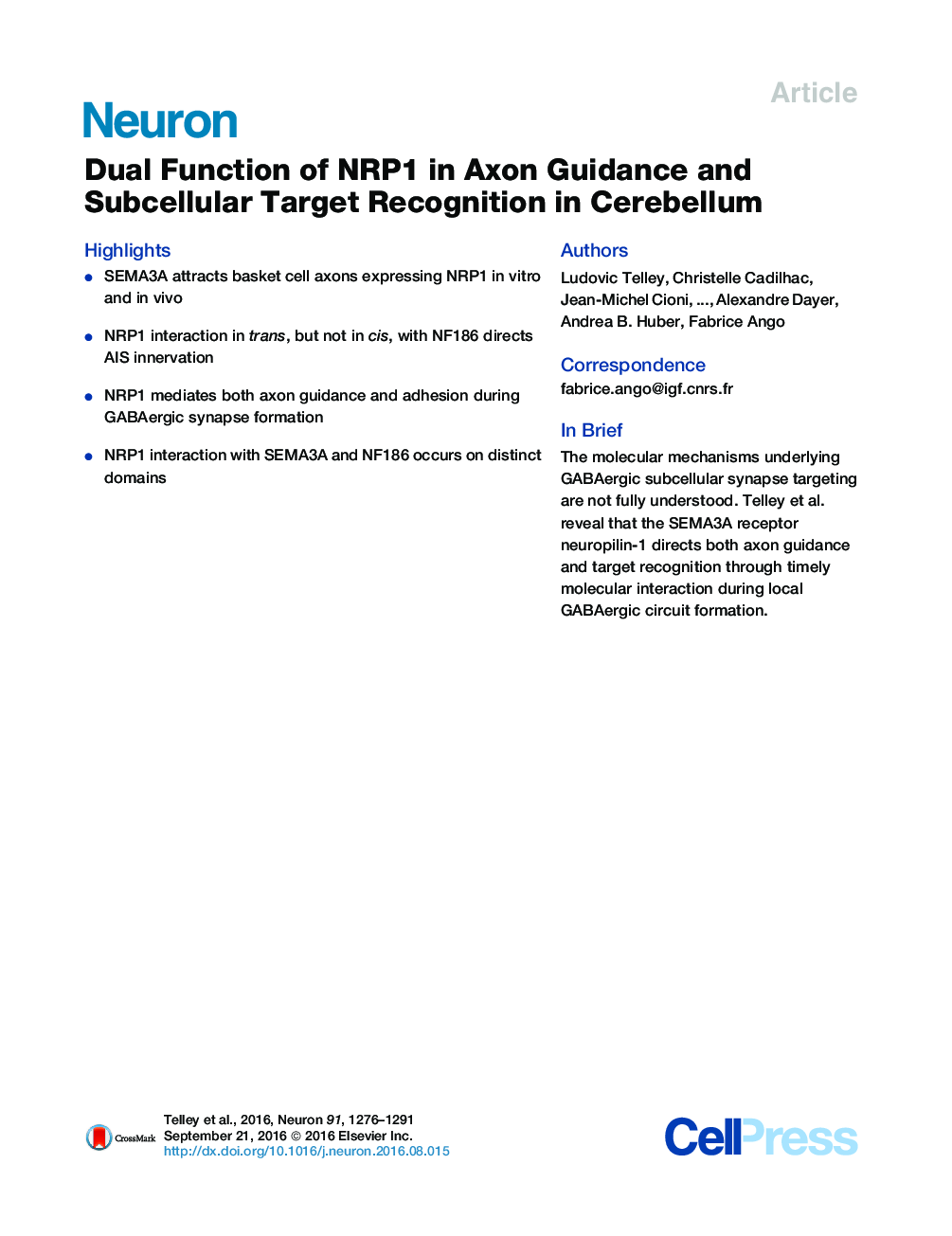| Article ID | Journal | Published Year | Pages | File Type |
|---|---|---|---|---|
| 4320635 | Neuron | 2016 | 16 Pages |
•SEMA3A attracts basket cell axons expressing NRP1 in vitro and in vivo•NRP1 interaction in trans, but not in cis, with NF186 directs AIS innervation•NRP1 mediates both axon guidance and adhesion during GABAergic synapse formation•NRP1 interaction with SEMA3A and NF186 occurs on distinct domains
SummarySubcellular target recognition in the CNS is the culmination of a multiple-step program including axon guidance, target recognition, and synaptogenesis. In cerebellum, basket cells (BCs) innervate the soma and axon initial segment (AIS) of Purkinje cells (PCs) to form the pinceau synapse, but the underlying mechanisms remain incompletely understood. Here, we demonstrate that neuropilin-1 (NRP1), a Semaphorin receptor expressed in BCs, controls both axonal guidance and subcellular target recognition. We show that loss of Semaphorin 3A function or specific deletion of NRP1 in BCs alters the stereotyped organization of BC axon and impairs pinceau synapse formation. Further, we identified NRP1 as a trans-synaptic binding partner of the cell adhesion molecule neurofascin-186 (NF186) expressed in the PC AIS during pinceau synapse formation. These findings identify a dual function of NRP1 in both axon guidance and subcellular target recognition in the construction of GABAergic circuitry.
